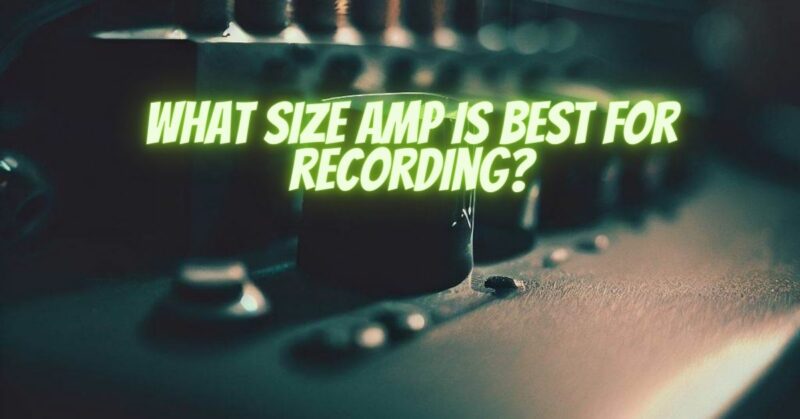Selecting the right amplifier size for recording sessions is a pivotal decision that significantly affects the quality, character, and versatility of your recorded guitar tones. The appropriate amp size depends on various factors, including the recording environment, desired tonal characteristics, and the nature of the music you’re creating. In this article, we’ll explore the considerations involved in determining the optimal amp size for recording, helping you achieve exceptional sonic results in the studio.
Recording Environment and Space
Home Studio: In a home studio setting, smaller amp sizes (around 5-15 watts) are often preferred due to their ability to provide usable tones at lower volume levels. They’re well-suited for capturing intimate and controlled recordings without disturbing neighbors or roommates.
Professional Studio: In a professional recording studio with isolation booths and advanced soundproofing, you have more flexibility in choosing larger amp sizes (15 watts and above) to capture a broader range of tonal possibilities.
Desired Tonal Characteristics
Clean and Low-Volume Tones: If your recording requires pristine clean tones or subtle overdrive at low volumes, a lower-wattage amp can deliver the desired tonal characteristics without excessive volume.
High Gain and Distortion: For recordings that demand high gain and heavy distortion, a higher-wattage amp ensures that the amp’s natural saturation and character shine through, even at moderate volumes.
Versatility: If you’re seeking versatility in your recorded tones, consider a mid-range amp size (15-30 watts), which can cover a spectrum of clean, crunch, and overdriven sounds.
Nature of the Music
Acoustic Recordings: For acoustic guitar recordings, a low-wattage amp can add warmth and dimension to the sound without overwhelming the natural resonance of the instrument.
Full Band Arrangements: When recording with a full band, a higher-wattage amp might be necessary to stand out in the mix alongside drums, bass, and vocals.
Additional Considerations
- Mic Placement and Room Acoustics: The positioning of microphones and the characteristics of the recording space influence the captured tone. Experiment with microphone distance and placement to achieve desired results.
- Volume Control: Smaller amp sizes provide more control over volume levels, enabling you to achieve desired tones without excessive loudness.
- Headroom: Higher-wattage amps offer more headroom, allowing cleaner and more defined tones even at higher gain settings.
- Direct Recording: In some cases, amp simulators or load boxes can be utilized for recording, eliminating the need for physical amplifiers and providing tonal flexibility.
Selecting the ideal amp size for recording involves a thorough assessment of your recording environment, tonal preferences, and the musical context of your recordings. Whether you’re aiming for intimate clean tones, searing high gain, or a range of versatile sounds, the right amp size plays a crucial role in achieving your sonic vision. By considering the factors mentioned and tailoring your amp choice to the demands of your recording sessions, you can confidently embark on a journey to capture the perfect sound that reflects your artistic expression.


